In this article, we’ll look at one of the most amazing and time-saving image retouching tools available. The Spot Healing Brush was first introduced in Photoshop CS2 and, like the other two healing tools the standard Healing Brush and the Patch Tool, it is basically a texture replacement tool. Without changing the problem area’s actual color or brightness values, it tries to create a seamless repair by replacing damaged and unwanted textures from one area in a photo with good textures from another area.
Making fast even faster with keyboard shortcuts
The Spot Healing Brush works fast, with a few simple keyboard shortcuts that will speed things up even more. To zoom in on the image, press Ctrl+spacebar (Win) / Command+spacebar (Mac), to temporarily access the Zoom Tool click on the spot you need to zoom in on. Press Alt+spacebar (Win) / Option+spacebar (Mac) to zoom out. To scroll around inside the image when you are zoomed in, hold the spacebar to temporarily switch to the Hand Tool, and click and drag to move the photo around.

The Spot Healing Brush Is Perfect For Removing Blemishes
Photoshop’s Spot Healing Brush is actually a texture replacement tool. It takes the damaged or unwanted texture from any one area and replaces it with a good texture from the surrounding area. The good texture is blended with the problem area’s actual tone and color to heal the photo with seamless results.

The Spot Healing Brush is similar to the standard Healing Brush. But while the Healing Brush makes you choose the good texture, the Spot Healing Brush chooses texture all on its own, which makes it much faster to use. When retouching skin, just click on a blemish with the Spot Healing Brush, and wait for the magic, the blemish is gone.
How to remove skin blemishes in Photoshop
Step 1: Add a new blank layer
With the photo newly opened in Photoshop, the Layers panel shows the photo on the Background layer.
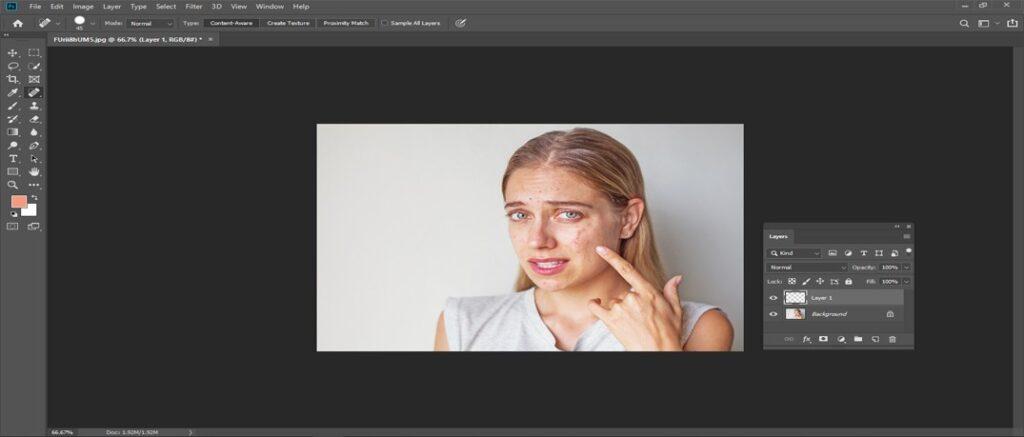
Add a new layer above the photo to keep your retouching work separate from the original picture, by pressing and holding the Alt (for Windows users) / Option (for Mac users) key and clicking the Add New Layer icon.
Now name the layer Spot Healing in the new Layer dialog box, and then click OK.
You can see the new Spot Healing layer appears above the Background layer.
Step 2: Select the Spot Healing Brush
Now select the Spot Healing Brush from the Toolbar.
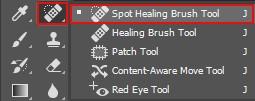
Step 3: Select the Sample All Layers Option
Turn on the Sample All Layers option in the options bar with the Spot Healing Brush selected.

Step 4: Select Content-Aware
Stay in the Options Bar, and make sure the Type is set to Content-Aware. This allows Photoshop to make intelligent decisions when choosing a good replacement texture.

Step 5: Click On the Skin Blemishes
Click on acne and other minor skin blemishes with the Spot Healing Brush to quickly heal them easily. For amazing results, keep your brush slightly larger than the blemish. You can change your brush size from the keyboard, by pressing the left third bracket key ( [ ) to make the brush smaller or the right third bracket key ( ] ) to make it larger.
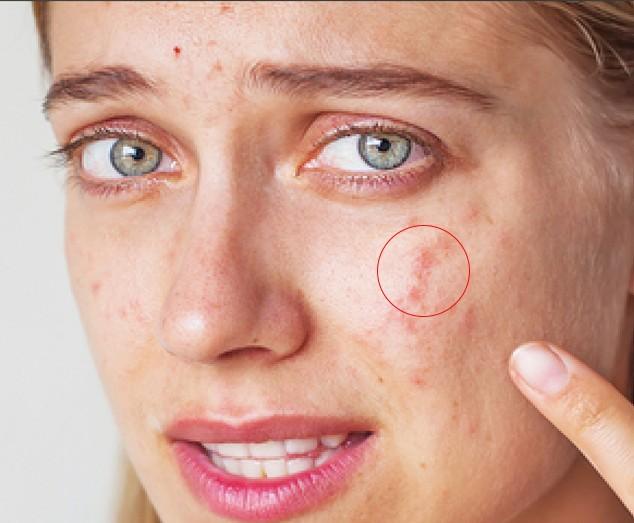
How to fix mistakes
It can happen Photoshop makes a mistake and the blemish may not go after the first try, undo your click just press Ctrl+Z (for Windows users) / Command+Z (for Mac users) on your keyboard. If needed, resize your brush and then click on the same spot to try again. You will get a different result each time you click.
Retouching larger areas with the spot-healing brush
You can click and drag the Spot Healing Brush in short strokes. You can see as you drag, your brush stroke will appear black.
Now release your mouse button and let Photoshop heals the area with surrounding texture. With only a short few minutes worth of effort, the Spot Healing Brush did a pretty good job.
Clearing up the remaining blemishes
Once again, you will start by clicking on the smaller, isolated pimples to heal them, keeping your brush just slightly larger than the pimple itself. To heal the remaining area, use a combination of clicking and dragging with a small brush.
The spot-healing brush blend modes
When retouching skin with the Spot Healing Brush, you will get better results by changing the blend mode of the brush from normal to Lighten. You can find the Blend Mode option in the Options Bar.
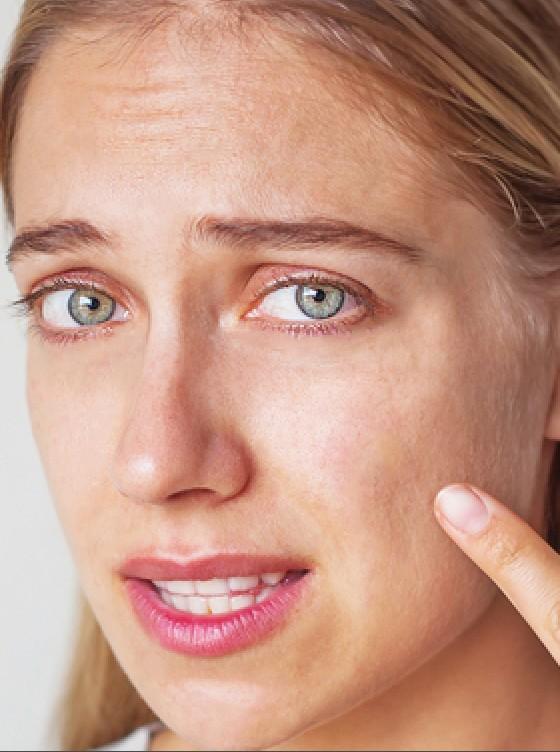
With the blend mode set to lighten, Photoshop will replace pixels that are darker than the good texture. Acne and other skin blemishes are usually darker than normal skin tone, only the pimple or blemish gets replaced, leaving more of the normal skin texture surrounding it intact. If a blemish is lighter than the original skin tone, try the darken mode instead. Press and hold the Shift key and press the + or – keys to quickly switch between blend modes for the Spot Healing Brush.
Before And After Comparison
To compare your retouching work with the original photo, toggle the Spot Healing layer on and off by clicking its visibility icon. Then click it once to turn the Spot Healing layer off and view the original image.
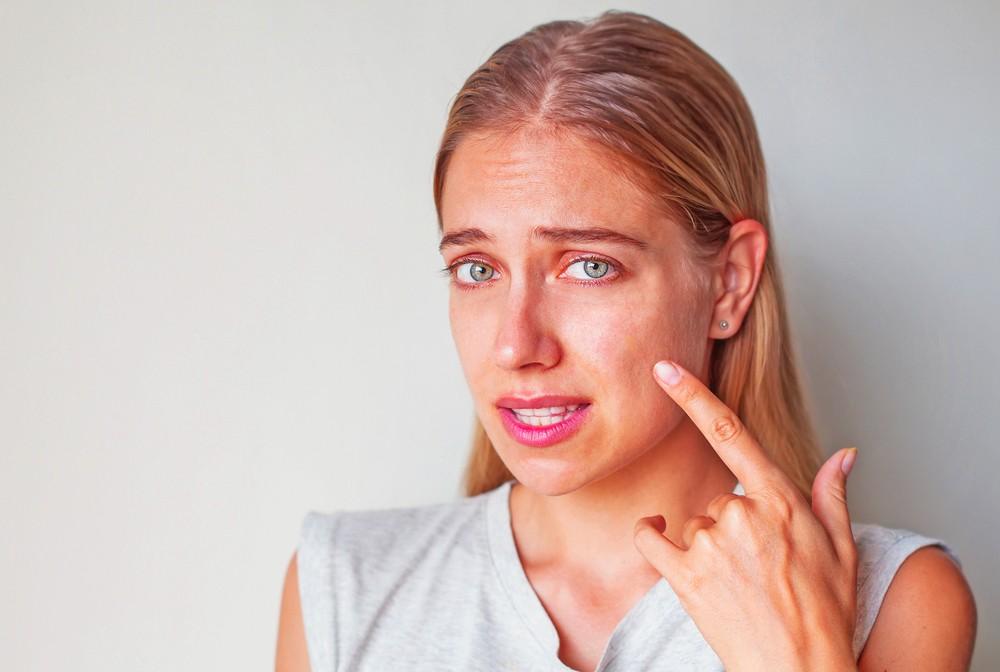
After that click it again to turn the Spot Healing layer back on and view your photo with the skin blemishes removed. And here you got an amazing result.